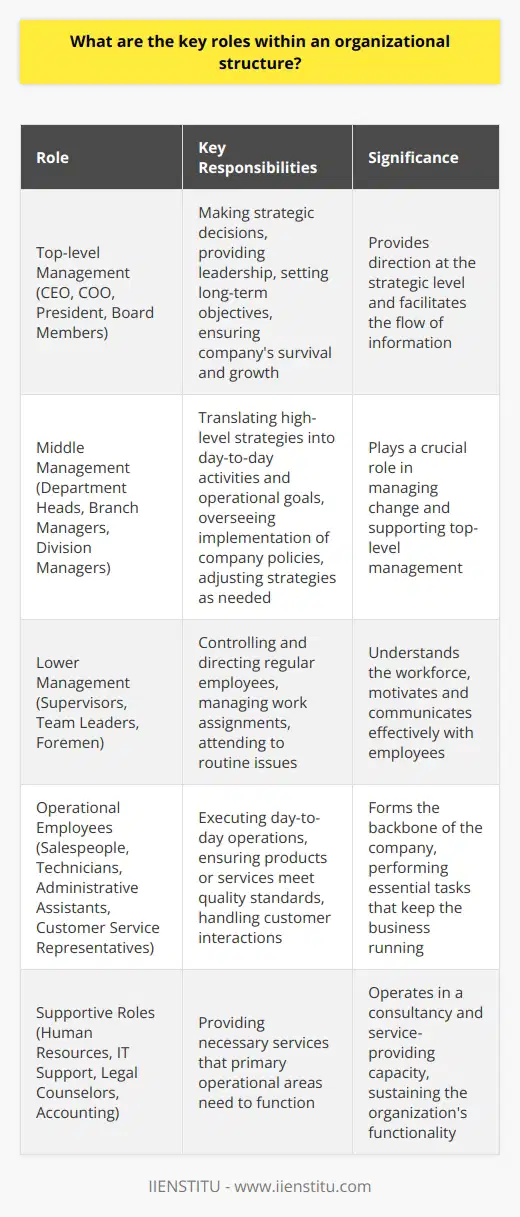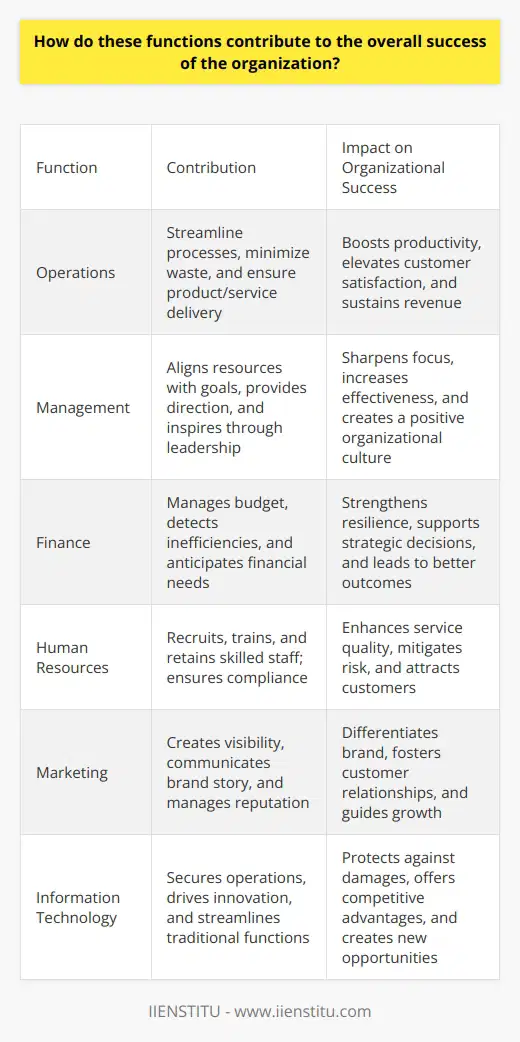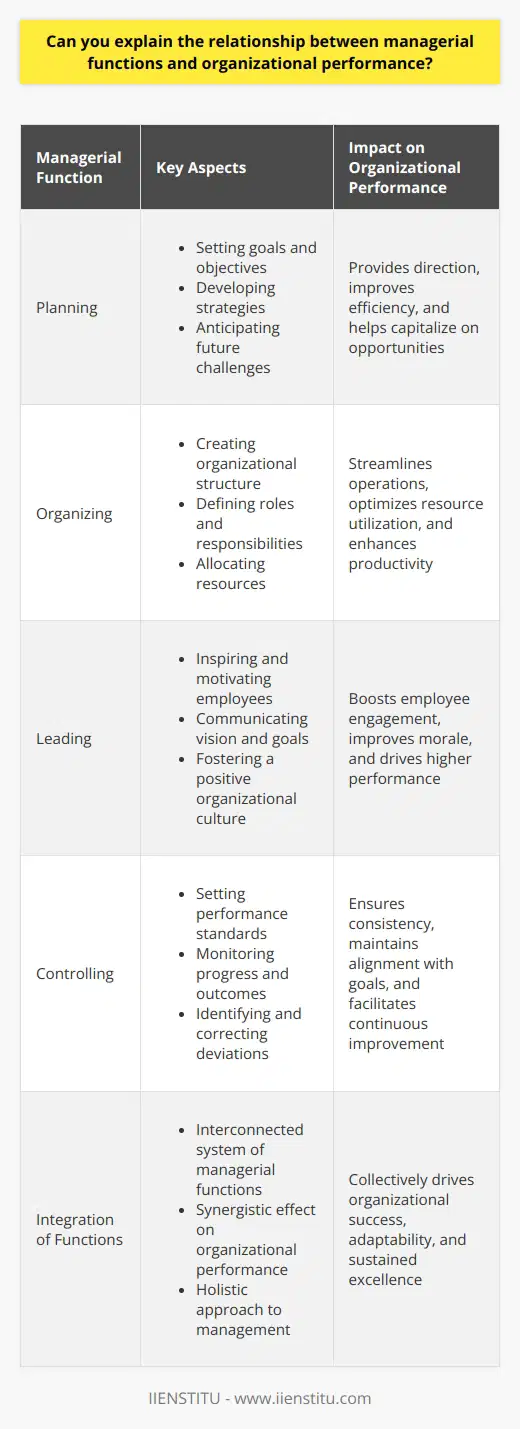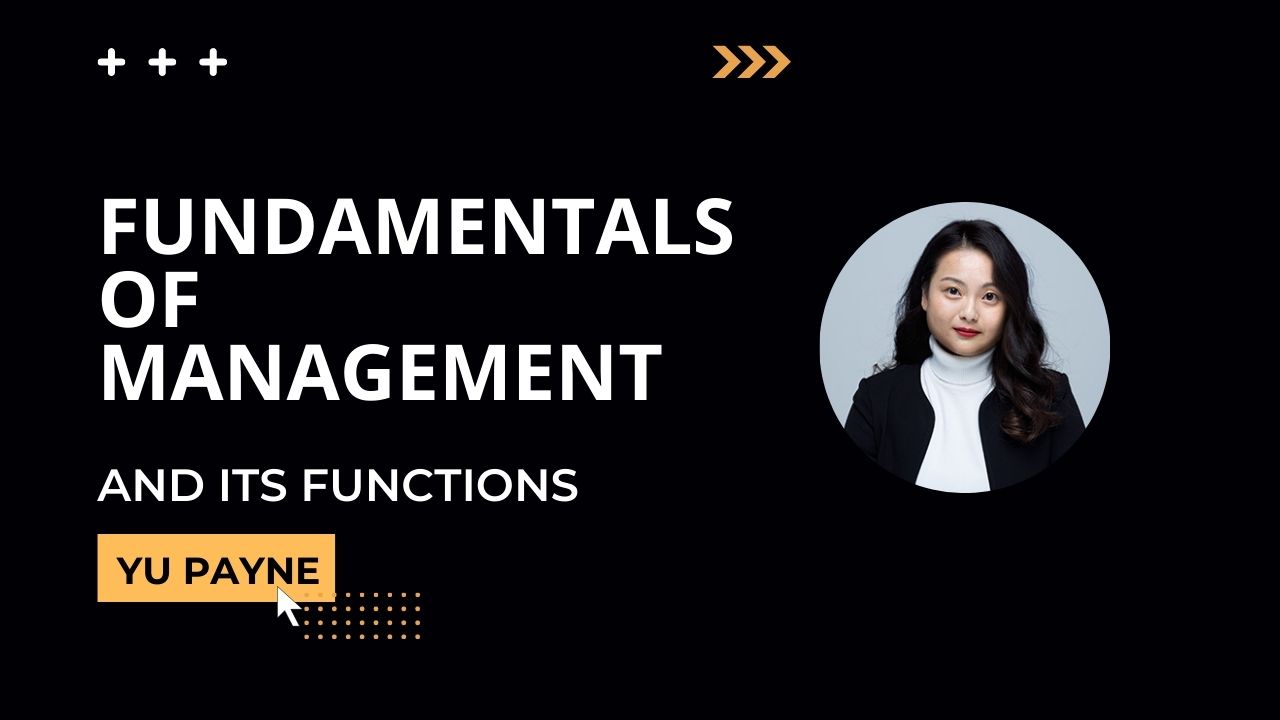
In the realm of organizational management, comprehending the inherent mechanisms of an organization's function forms the cornerstone for seamless operations and sustained success. This discourse delves into the intricacies of organization function, a pivotal subject thoroughly expounded in the book comprising titles such as "Organization Function Basics," "Understanding Organization Function," "Essentials of Organization Function," "Explaining Organization Function," and "Roles in Organization Function." As we embark on this exploration, readers seeking to achieve an MBA certificate or engross themselves in online certification courses will find in this discussion a foundational guide to navigating the complexities of organizational structures and roles.
Introduction to Organization Function Basics
Definition and Importance of Organization Function
Organization function encapsulates the systematic procedures and structured roles within a corporate body that work in concert to achieve its goals. As an amalgamation of people, processes, and technology, the function of an organization is akin to the workings of a well-oiled machine, where each part plays a specific role contributing to the overall efficacy of the entity.
Objectives of the Blog Post
This post aims to elucidate the quintessential aspects of organization function that are pivotal to students, professionals, and leaders in the world of business. We endeavor to provide a holistic understanding that is not only theoretically sound but also practically applicable.
Understanding Organization Function
Theoretical Frameworks Underpinning Organization Function
Classical Organizational Theory: Classical organizational theory posits a form of management based on a rigid hierarchy and a clear division of labor. It implies an approach where efficiency is hailed as the chief determinant of organizational health. With roots in the works of pioneers like Frederick Taylor and Henri Fayol, this school of thought laid the early groundwork for understanding structure and authority in business.
Contemporary Organizational Theory: In contrast, contemporary organizational theory addresses the nuances of modern corporations, which operate in a more dynamic, complex, and often less predictable environment. This progressive perspective recognizes the multifaceted nature of human behavior within organizations and emphasizes the importance of adaptability and emotional intelligence.
Key Components of Organization Function
Structure and Design of Organizations: The architecture of an organization determines the flow of information and dictates the alignment of roles and responsibilities. This fundamental setup affects how an entity responds to external pressures and achieves its missions.
Division of Labor and Specialization: Specialization harnesses individual expertise and facilitates efficiency by dividing complex tasks into simpler, manageable components. It remains a key element of organization function as it underpins the allocation of resources and manpower.
Coordination and Control Mechanisms: Effective coordination and control are essential to ensure that the specialized units within an organization operate harmoniously towards common objectives, thereby preventing discord and inefficiency.
The Role of Culture in Organization Function: Organizational culture is the collective values, beliefs, and norms that shape interactions and decision-making within a business. A positive culture can bolster motivation and enhance performance, making it an integral component of successful organization function.
Essentials of Organization Function
Effective Leadership and Management
Leadership Styles and Their Impact on Function: Leadership styles such as transformational, transactional, or laissez-faire have a profound impact on the organizational climate and productivity. Understanding the nuances of these styles is pivotal for any leader aiming to steer their organization towards prosperity.
Management Practices that Promote Efficiency: Management practices such as Lean Management and Six Sigma are designed to eliminate waste and improve quality, thereby enhancing the efficiency of the operational aspects of an organization.
Strategic Planning and Goal Setting
Aligning Organizational Function with Strategic Objectives: Strategic planning is fundamental in defining the long-term trajectory of an organization. It ensures that every function within the organization is attuned to overarching goals and objectives.
Importance of a Clear Vision and Mission: The articulation of a clear vision and mission provides direction and purpose, serving as a guiding star for decision-making and prioritization across all levels of function within an organization.
Communication as a Pillar of Organizational Function
Internal Communication Strategies: Robust internal communication frameworks ensure that information flows seamlessly across various tiers and departments, safeguarding transparency and unity within the organization.
External Communication and Its Role in the Organization's Function: External communication embodies the voice of an organization to its stakeholders. How an entity communicates its values, objectives, and achievements to the outside world is instrumental in shaping its public image and reputation.
Decision-Making Processes
Hierarchical vs. Collaborative Decision-Making: A hierarchical decision-making structure might expedite processes in a staunchly tiered organization, whereas a collaborative approach can foster innovation and a sense of ownership among team members. Both have distinct influences on the functioning of an organization.
Influence of Decision-Making on Organizational Outcomes: Regardless of the model employed, decision-making is a critical function that can dictate the success or failure of strategies and therefore requires judicious execution.
Explaining the Roles in Organization Function
The Interplay Between Different Organizational Roles
Executives and Their Strategic Function: Executives play a critical role in charting the strategic course and ensuring that the organization's functions are in alignment with its vision and goals.
Managers and Their Operational Function: Managers translate strategy into actionable plans, orchestrating the operational aspects of the organization to work towards set targets.
Employees and Their Executional Function: Employees carry out the day-to-day tasks that drive the organization forward, and their collective efforts are the backbone of organizational function.
Cross-Functional Teams and Their Importance: Cross-functional teams, composed of members with diverse skill sets, are essential in driving innovation and problem-solving, allowing an organization to tackle complex challenges holistically.
Outsourced Roles and Their Integration into Organizational Function: Outsourcing can provide an organization with specialized expertise or cost efficiency. The key to success lies in seamless integration with the organization's internal functions.
Analyzing the complex web of roles within an organization can provide profound insights into its operational health and potency.
Challenges in Optimizing Organization Function
Balancing Flexibility with Standardization: Organizations must strike a delicate balance between the agility to adapt to changing environments and the consistency of standardized processes to maintain quality and efficiency.
Navigating Change Management: Change management often presents a significant obstacle, as organizations must evolve without disrupting core functions or diminishing employee morale.
Overcoming Communication Barriers: Communication barriers can lead to misalignment and inefficiency, thus addressing them is crucial for the optimization of organization function.
Ensuring Sustainable and Ethical Practices: Sustainability and ethics are becoming increasingly crucial in shaping an organization's legacy and function, demanding vigilant governance and compliant practices.
Real-World Applications and Examples
Case Studies Highlighting Successful Organization Function
Example of a Tech Company: Analyzing tech giants such as Google or Apple with their innovative structures and fluid organization functions can provide tangible illustrations of successful practices.
Example of a Nonprofit Organization: Nonprofits like Doctors Without Borders exhibit how mission-driven organization functions can achieve incredible feats even in resource-constrained environments.
Learning from Organizations with Dysfunctional Structures: Examining the downfall of corporations with inflexible or siloed structures offers valuable lessons on the pitfalls to avoid in order to maintain a robust organization function.
Conclusion
Recap of Organization Function Essentials
In this comprehensive foray into the essentials of organization function, we have deconstructed its many facets, from theoretical underpinnings to the significance of leadership and communication strategies.
Final Thoughts on the Continuous Improvement of Organizational Function
The dynamism of the business landscape necessitates continuous refinement of organization function, demanding an ongoing commitment to learning and adaptation.
Frequently Asked Questions
What are the key roles within an organizational structure?
Key Roles in Organizational Structure
Organizational structures define how activities such as task allocation, coordination, and supervision direct towards the achievement of organizational aims. They can vary widely, reflecting the company's goals, culture, and the sector in which it operates. Recognizing the key roles within any organizational structure is essential for ensuring efficient operations and effective management.
Top-level Management
Top-level management holds the apex of an organizational structure. These roles include positions like Chief Executive Officer (CEO), Chief Operating Officer (COO), President, and Board Members. Their responsibilities entail making strategic decisions, providing leadership, setting long-term objectives, and ensuring the company's overall survival and growth. These executives provide direction at the strategic level and facilitate the flow of information.
Middle Management
Just beneath top-level management lies middle management. Roles like Department Heads, Branch Managers, and Division Managers fall here. They translate the high-level strategies into day-to-day activities and operational goals. These managers oversee the implementation of company policies and adjust strategies as needed. They also play a crucial role in managing change and supporting top-level management.
Lower Management
Lower management connects middle management and the staff. Positions such as Supervisors, Team Leaders, and Foremen make up this level. They focus on controlling and directing regular employees, managing work assignments, and attending to routine issues. Their understanding of the workforce helps them motivate and communicate effectively with employees.
Operational Employees
At the base of the pyramid, operational employees execute the day-to-day operations. They consist of roles such as Salespeople, Technicians, Administrative Assistants, and Customer Service Representatives. They are the backbone of the company, performing essential tasks that keep the business running. These individuals ensure that the products or services meet quality standards and that customer interactions are satisfactory.
Supportive Roles
Outside the direct line of command yet essential, supportive roles sustain the organization's functionality. Human Resources, IT Support, Legal Counselors, and Accounting are examples. These roles do not fall into the strict hierarchy but provide necessary services that the primary operational areas need to function. They operate more in a consultancy and service-providing capacity.
Project Teams and Task Forces
In many organizations, project teams and task forces tackle specific challenges or projects. This can include Project Managers, Business Analysts, and Project Coordinators. They collaborate across different areas of the organization to accomplish project goals. These groups often disband after project completion.
Customer Service
Customer service plays a pivotal role. Roles include Customer Service Managers and Representatives. They handle customer interactions, resolve complaints, and ensure customer satisfaction. Their feedback is crucial for improving products or services.
Understanding each role and its responsibilities is crucial to optimizing organizational performance. Clear roles help prevent confusion and improve efficiency. An organizational structure with well-defined roles adapts more easily to change and can lead to higher employee satisfaction and better business outcomes.

How do these functions contribute to the overall success of the organization?
Organizational Success Through Functionality
To grasp how functions drive success, recognize goals. Goals set the stage for success. They provide focus. Concrete goals guide functions. Without clear goals, functions scatter. They lose their strategic value.
Defining Functions in Organizations
Functions encompass various tasks. They are action points. They fulfill organizational needs. Functions span from operations to management. Each has its own merit. Operations ensure products or services delivery. Management aligns resources with goals. Together, they create organizational harmony.
Operational Functions Contribute to Efficiency
Efficiency is the heart of operations. Operations ensure tasks completion. They streamline processes. This minimizes waste. Waste comes in time, materials, or effort. Operational efficiency boosts productivity. Increased productivity paves the way to success.
Quality control is a critical operation. It ensures standard maintenance. Standards elevate customer satisfaction. Satisfied customers bring loyalty. Loyalty translates to sustained revenue.
Management Functions Drive Strategic Alignment
Management functions provide direction. They focus on resource allocation. Correct resource allocation maximizes potential. It aligns staff with strategic goals. This alignment sharpens focus. A focused team increases effectiveness.
Leadership within management inspires. Leaders create the organization’s culture. Culture affects employee engagement. Engaged employees perform better. Better performance supports success.
Financial Functions and Fiscal Health
Financial functions sustain fiscal health. They manage the budget. Fiscal oversight detects inefficiencies. It anticipates financial needs. Anticipation prepares organizations for upheaval. Being prepared strengthens resilience. Resilience gives a competitive edge.
Bookkeeping tracks every transaction. Accurate records support strategic decisions. Better decisions lead to better outcomes. Successful organizations base decisions on data.
Human Resources as Talent Cultivators
Human resources cultivate talent. They recruit, train, and retain staff. Skilled staff are assets. Without talent, functions stutter. Human resources ensure compliance. Compliance mitigates risk. Less risk stabilizes the organization.
Employee development is an HR function. Training enhances skills. Skills add to service quality. High service quality attracts customers. More customers mean more success.
Marketing Functions Build Brand Presence
Marketing functions create visibility. Visibility is paramount for growth. Through marketing, organizations communicate. They tell their story. This storytelling lures in customers. It differentiates the brand. Differentiation stands out in markets. Standing out can lead to dominance.
Public relations manage reputation. Reputation breeds trust. Trust is invaluable. It is the foundation of customer relationships. Strong relationships foster sustainability.
IT Functions Secure and Innovate
IT functions secure operations. They protect against cyber threats. Security is non-negotiable. Breaches cause costly damages. Damages can topple organizations.
IT also drives innovation. New technologies offer competitive advantages. They streamline traditional functions. They create new methods. New methods redefine markets. Redefinition leads to new opportunities. New opportunities guide to success.
In summation, functions intersect. They support and enhance. They create a web of productivity. Each function has a role. Roles interlock for success. Success stems from combined efforts. Functions are the gears. Together they turn the machine. The machine is the organization. A well-oiled one triumphs.

Can you explain the relationship between managerial functions and organizational performance?
Managerial Functions: The Pillars of Organizational Performance
Managerial functions serve as the backbone of organizational performance. The success or decline of an organization often roots in the effectiveness of its management. Managers shoulder various key functions. These include planning, organizing, leading, and controlling. Each function bears significance. They intertwine to shape the organizational output. Let us delve deeper into this intricate relationship.
Planning: Charting the Course
Planning stands as the foundational managerial function. It ties directly to performance. Managers set goals through planning. They outline strategies. Paths are created for achievement. Future pitfalls are considered. Without planning, organizations lack direction. They may veer off course. They might miss opportunities. Efficiency suffers. Thus, strategic planning equates to laying down the track for organizational movement.
Organizing: Structuring for Success
Organization follows planning. It entails creating a structure. Tasks are defined here. Roles are allocated. Responsibilities are clear. Resources get distributed. Proper organization maximizes productivity. It optimizes resource use. These steps ensure every individual knows their part. They clarify how each role contributes to overall aims. A well-organized entity boasts streamlined operations. It shows in performance metrics.
Leading: Steering the Ship
Leadership embodies the human aspect of management. Managers lead people. They inspire action. They motivate. They communicate vision. Great leaders foster a positive culture. This culture drives worker engagement. It can boost morale. This increased morale often translates to higher performance. Employees commit when they feel valued. They go the extra mile. Hence, leadership quality profoundly impacts organizational outcomes.
Controlling: Maintaining Course
Controlling stands crucial for sustained excellence. It involves setting standards. Monitoring progress is part of it. Comparing outcomes to benchmarks happens. Where discrepancies arise, managers must intervene. They troubleshoot. They refine processes. Feedback loops are vital here. They allow for adjustments. This ensures consistency in performance. It safeguards against deviation from desired results. In essence, controlling means keeping the ship on its plotted course in tumultuous seas.
Each managerial function contributes to organizational performance in its unique way. They form an interconnected system. This system maintains the machinery of organizational success. Without planning, there is no direction. Without organization, there is no structure. Without leadership, there is no motivation. Without control, there is no consistency. Collectively, these functions encapsulate the quintessence of adept management leading to high-performing organizations.



